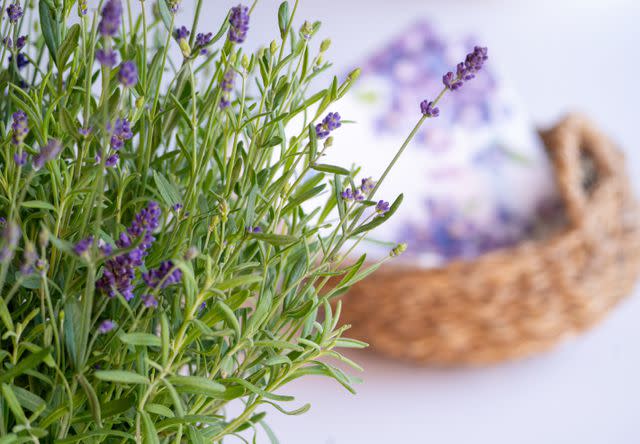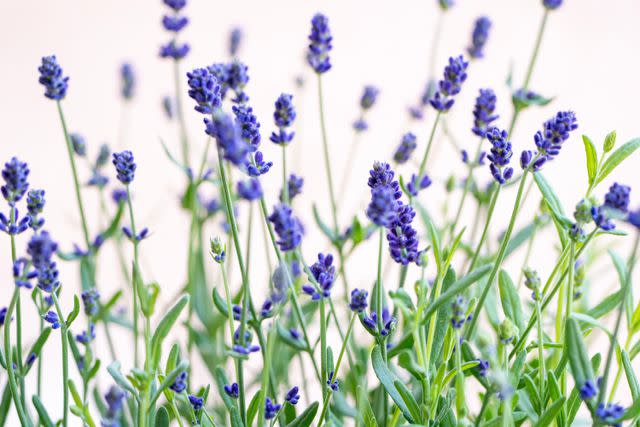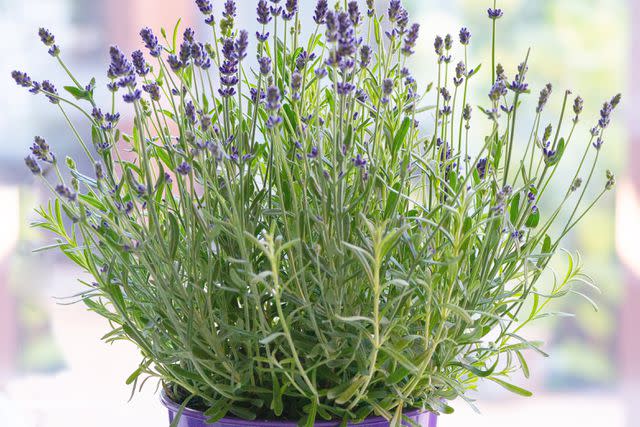How to Grow and Care for Lavender Indoors
Lavender (Lavandula spp.) is a well-known perennial plant that's often planted in outdoor gardens, where it attracts a bounty of bees and other pollinators. It grows well in outdoor flower beds, where it will come back every year, but you can also grow lavender indoors. With the proper conditions, lavender will thrive as a houseplant, and give you year-round access to its fragrant blooms.
Be cautious where you grow your lavender indoors, as it contains a small amount of linalool, which is toxic to dogs and cats if ingested.
Common Name | Lavender |
Botanical Name | Lavandula spp. |
Plant Type | Perennial, shrub |
Toxicity | Toxic to dogs, cats, and horses |
Can You Grow Lavender Indoors?
Lavender is not a traditional houseplant, but that doesn't mean it won't succeed if grown indoors. While it's easy and rewarding to grow, in order to thrive indoors, lavender needs to receive as much light as possible. For this reason, it's best to place your potted lavender in a south-facing window or under an LED grow light. To keep the perennial shrub healthy, indoor temperatures should be kept between 50 and 70 degrees Fahrenheit, depending on the time of year.
There are more than 450 varieties of lavender. Some of the best varieties to grow indoors include French lavender, Canary Island lavender, and fernleaf lavender. With the proper conditions and attention, you should be able to enjoy the calming aromas of lavender indoors all year long.

The Spruce / Evgeniya Vlasova

The Spruce / Evgeniya Vlasova

The Spruce / Evgeniya Vlasova
How to Grow Lavender Indoors
Sunlight
One of the greatest challenges of growing lavender indoors is ensuring it gets enough sunlight. Lavender is a sun-loving plant, and needs as much of it as possible when indoors. It will do best in a sunny south-facing window or somewhere it can get at least four hours of direct sunlight each day. Potted lavender should be rotated once a week to ensure uniform growth and flowering.
Without enough light, lavender will stop producing its fragrant purple blooms, and be more susceptible to diseases or pests.
Artificial Light
If there isn't a spot in your house or apartment that gets consistent sunlight all year long, you might consider investing in an LED grow light. The lights should be hung from 14 to 30 inches above the plant. Keep the lavender under the LED grow lights for at least 12 hours a day.
Temperature and Humidity
When grown outdoors, lavender weathers a range of temperatures and humidity levels with the seasons. For indoor growing, temperatures should be somewhere between 50 and 55 degrees Fahrenheit at night and around 70 degrees Fahrenheit from spring to fall. From late fall through the end of winter, temperatures for lavender should be kept cooler: 45 to 50 degrees Fahrenheit at night and 60 to 65 degrees Fahrenheit during the day.
Lavender prefers a low-humidity climate, which makes it ideal for growing indoors, as most homes maintain a humidity level of 40 percent or lower.
Watering
Lavender that's grown in a pot requires more watering than when it's planted in a garden bed. When grown indoors, lavender typically needs to be watered once every 10 to 14 days.
As with all houseplants, check the soil moisture by feeling the soil with your finger before thoroughly watering the plant.
Fertilizer
You should only fertilize your indoor lavender plant during the spring and summer. Use an organic plant food listed for use in containers or a water soluble plant food solution at half the recommended strength.
Pruning and Maintenance
You can and should prune your lavender plant. Cutting away stems and branches with flowers will promote new growth elsewhere, leading to a fuller plant. Whether growing indoors or outdoors, lavender should be pruned after the first flowering in the spring, and again in the fall.
Container and Size
The size of the pot you plant your lavender in will depend on the plant's size. In general, the container should be one to two inches larger than the plant's rootball. Ceramic and terracotta pots are the best kinds to plant lavender in.
Potting Soil and Drainage
Whether outdoors or indoors, lavender thrives best in well-drained, slightly gritty soil. The best for indoor lavender is a quick-draining mix of good quality potting soil and cactus soil. You can also supplement the soil mix with limestone.
Potting and Repotting Lavender
When potting lavender, make sure the pot has drainage holes in the bottom. Fill the pot with soil, leaving a couple of inches at the top. Gently massage the roots to loosen them. Place the plant in the pot and add more soil to the top, leaving about half an inch between the soil and the top of the pot.
Lavender is a slower growing shrub, so it won't need to be repotted frequently. A good rule of thumb for repotting lavender is to do it every one to two years. Repot the plant in a pot that's one size up, as moving up in size too quickly can slow the lavender plant's growth.
Moving Lavender Outdoors
You can move lavender outdoors in the spring and summer, as the cold-hardy perennial plant can survive outdoors all year long.
Frequently Asked Questions
What plant pests are common to lavender?
Many common pests are attracted to lavender, including whiteflies, spider mites, leafhoppers, and spittlebugs.
Is it easy to propagate lavender?
Lavender is a relatively easy and rewarding plant to propagate. There are several ways to propagate lavender, but one of the easiest is to propagate from cuttings, which root easily in nutrient-rich soil. The best time to take lavender cuttings for propagation is between June and September.
Read Next: 16 Herbs That Grow Indoors All Year

